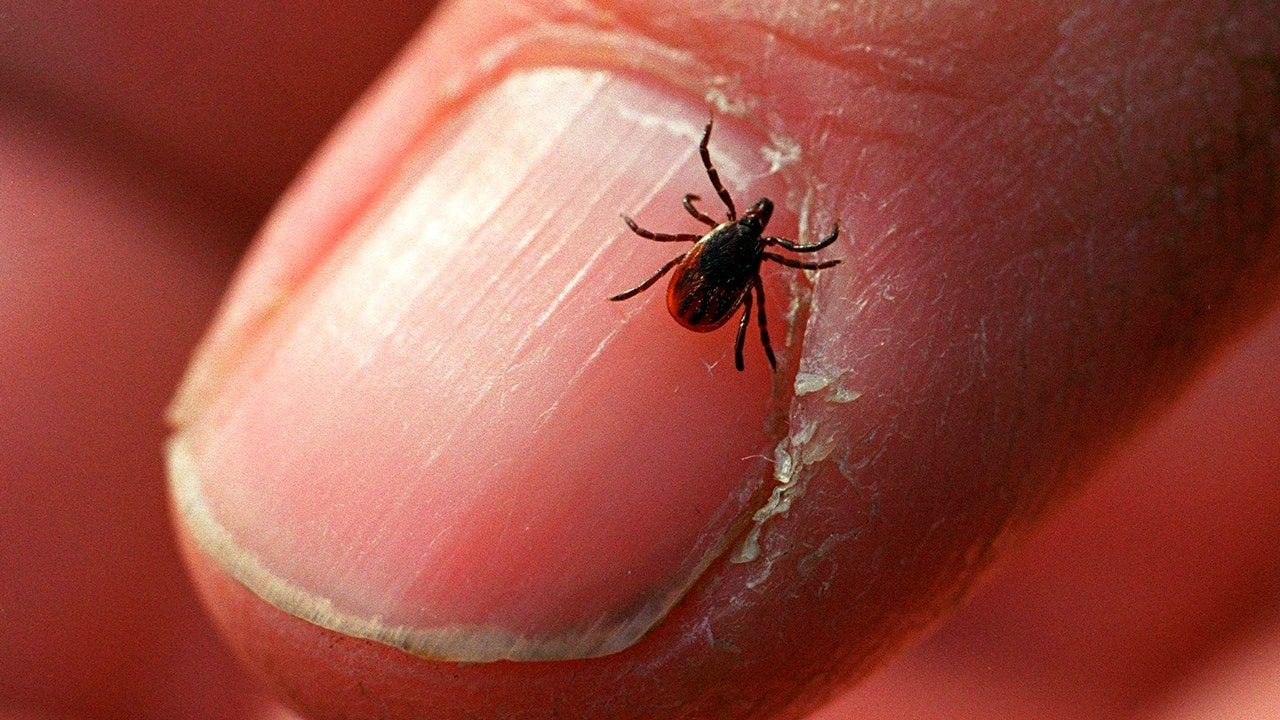Health
If You Take Vitamin D, You May Need This Other Vitamin to Reduce Calcium Clogging in Arteries

Throughout my life, I’ve heard that vitamin D is the best vitamin you can take to promote better health. It helps the immune system function to the best of its ability, it contributes to stronger bones, it gives our mood a huge boost, and it may even lower our risk of certain cancers. But I never knew that taking a lot of vitamin D without taking vitamin K might not be ideal. A growing body of research suggests that taking vitamin D with K2 is the best way to boost bone strength, and may help prevent calcium-filled plaque from building up in arteries.
How do vitamin D and vitamin K work in the body?
As you likely know, vitamin D is important for bone strength because it increases calcium absorption. Without this essential nutrient, people may experience a loss of bone mineral density, which weakens the bones and can cause fractures.
However, vitamin D isn’t the only nutrient that improves the health of our bones. A 2018 scientific paper from BioMed Research International shows that vitamin K plays a crucial role in maintaining bone strength. According to the study authors, it can prevent cells vital to bone growth from dying and also stimulate them to multiply.
Furthermore, vitamin K can help the body pull calcium into the bones and teeth — something that vitamin D cannot do. This is because vitamin K triggers a protein called osteocalcin to get to work. Once osteocalcin — which is dependent on vitamin K — activates, it helps accumulate calcium in the bones and teeth.
Why Vitamin K May Help Reduce Calcification in Arteries
By helping to draw calcium into the bones and teeth, vitamin K may help reduce the amount of calcium in soft tissues, like the arteries. A 2015 study from Integrative Medicine: A Clinician’s Journal states that vitamin K2 may reduce arterial calcification — that is, a buildup of calcium-containing plaque in the arteries — because it may help stop calcium from sticking to artery walls. It may also reduce arterial stiffness.
Now, this doesn’t mean that vitamin D is harmful if you take it without vitamin K. It also doesn’t mean that vitamin D contributes to calcification in your arteries. More evidence is needed to find out whether these claims are true. However, this research does mean that vitamin K may improve your arterial health if you are taking calcium supplements. As vitamin D promotes higher levels of calcium in the body, it may therefore be wise to take vitamin D with vitamin K2.
How much vitamin D with vitamin K2 should you take?
Research suggests that a good starting point for vitamin K2 supplementation is 100 micrograms daily. The daily requirement suggested by the National Institutes of Health (NIH) for vitamin K is 122 micrograms for women. Unfortunately, that recommendation doesn’t specify whether to take vitamin K1 or K2, or both.
In addition, the recommended daily allotment for vitamin D for adults aged 19 to 70 years is 600 IU, or 15 micrograms. For adults aged 71 and older, the recommended amount is 800 IU, or 20 micrograms. The safe upper limit is 4,000 IU. If you’re vitamin D deficient, your doctor may have prescribed a higher dosage. That’s okay! As long as you’re sticking to your recommended dosage, you’ll be good to go.
Ultimately, taking both vitamins in moderation may do great things for your health! Just be sure to speak with your doctor before adding supplements to your daily regimen. While these vitamins are essential nutrients, they aren’t ideal for everyone in supplement form and may interact with other medications or cause side effects. A doctor will be able to assess your current dietary needs and determine whether vitamin D and K supplements are ideal for you.
This article originally appeared on our sister site, First for Women.
This article was updated on May 30, 2023. It was originally published on February 23, 2022.

Health
fatty15 has the essential nutrient to ease stress and well-being

Sign Up
Create a free account to access exclusive content, play games, solve puzzles, test your pop-culture knowledge and receive special offers.
Already have an account? Login
Forgot your password?
Get back to the Sign In
Use left and right arrow keys to navigate between menu items.
Use escape to exit the menu.
Health
Summer is tick season, but these tips can help you avoid the bloodsucking bugs

Tick season is starting across the U.S., and experts are warning the bloodsuckers may be as plentiful as ever.
Another mild winter and other favorable factors likely means the 2024 tick population will be equal to last year or larger, some researchers say.
“It’s very bad and has only been getting worse,” said Susanna Visser of the Centers for Disease Control and Prevention.
TICK BITES AND LYME DISEASE: WHAT TO DO IF A TICK BITES YOU OR YOUR PET
An increasing variety of ticks are pushing into new geographical areas, bringing unusual diseases. Exotic southern species like the Gulf Coast tick and the lone star tick are being detected in New York and other northern states, for example.
But the tick that experts warn of the most is a common blacklegged tick, which is found mainly in forests and spreads Lyme disease. Infection rates begin to peak in May, and U.S. health officials estimate nearly half a million Lyme disease infections happen annually.
Here’s a look at what’s expected this year and how you can protect yourself.
An adult deer tick, also known as the blacklegged tick, crawls on a fingernail at Connetquot State Park in Oakdale, New York on Dec. 27, 2011. (Bill Davis/Newsday RM via Getty Images)
TICK FACTS
Ticks are small, eight-legged bloodsucking parasites — arachnids, not insects — that feed on animals and sometimes people. Some ticks are infected with germs that can cause illness, and they spread those germs when they bite.
There is no widely accepted estimate of how many ticks there are from one year to the next, but there is a scientific consensus that they are an increasingly common health hazard in large portions of the United States.
Blacklegged ticks — also known as deer ticks, since they feed on deer — are among the most common ticks in the eastern half of the U.S. They were plentiful centuries ago, then diminished when forests were cut down and deer were hunted, and rebounded alongside deer and wooded suburbs. The ticks have spread out from pockets in New England and the Midwest over a wider range.
Tick populations cycle throughout the year and their numbers depend on a few factors. They like warm, humid weather, and more can be seen after a mild winter. The more deer and mice available to feed matters, too.
Overall, the blacklegged tick population has been expanding for at least four decades, researchers say.
“This is an epidemic in slow motion,” said Rebecca Eisen, a CDC research biologist and tick expert.
2024 TICK SEASON FORECAST
Weather can play a role in the severity of a tick season.
Very cold, dry winters can whittle down tick populations, but recent winters have been mild — a trend some attribute to climate change.
As Scott Williams, a tick researcher at the Connecticut Agricultural Experiment Station, said: “Winters are no longer limiting the tick population.”
Ticks can withstand the heat but tend to almost hibernate when it’s a dry summer. That happened in Maine in 2020 through 2022, said Chuck Lubelczyk, a vector ecologist at the MaineHealth Institute for Research.
But last year was a very wet year, and tick activity multiplied in Maine — the state with the highest incidence of Lyme disease in the country. Weather service predictions call for higher temperatures and precipitation, so “on paper, at least, it could be a very good year for the ticks,” Lubelczyk said.
In Wisconsin, adult ticks were out longer than usual due to a mild winter. The tick nymphs are starting to emerge, and a wet spring is setting the stage for the possibility that the population will be robust, said Xia Lee, an entomologist at the Wisconsin Department of Health Services.
Ditto New York.
“It will be as bad as last year, or worse,” said Saravanan Thangamani, who studies ticks and tickborne diseases at SUNY Upstate Medical University in Syracuse.
WHAT IS LYME DISEASE?
Not all ticks are infected with disease-causing germs — about 20% to 30% of the blacklegged tick nymphs that emerge in the Northeast and Midwest this spring and into summer will be carrying the bacteria that causes Lyme disease, experts estimate.
Lyme disease symptoms tend to start between three and 30 days after a bite occurs and can include fever, headache, fatigue and a bull’s-eye-like rash. If you get bitten and develop symptoms, see a doctor to get treated with antibiotics.
HOW TO KEEP TICKS OFF OF YOU
Experts say the best thing to do is take steps to avoid a tick bite in the first place.
If you go outdoors, make note of wooded areas and where grassy properties start bleeding into wooded areas. Ticks tend to perch on ankle-level vegetation with their upper legs outstretched, waiting to latch on to an unsuspecting dog or human.
Try to walk in the middle of paths, wear light-colored and permethrin-treated clothing and use Environmental Protection Agency (EPA)-registered insect repellents.
HOW TO CHECK FOR TICKS
When you come inside, check for ticks. They can be found anywhere on the human body, but common spots include around the waist, behind the knees, between fingers and toes, on underarms, in the belly button and around the neck or hairline.
They are harder to see when they are young, so look carefully and immediately pull them off with tweezers.
The CDC does not recommend sending individual ticks to testing services for analysis, because a person might get more than one tick bite and the results from the tested tick may not be sufficient information.
Health
Pizza for Weight Loss? Top MD Says This Dough Makes It Possible

Sign Up
Create a free account to access exclusive content, play games, solve puzzles, test your pop-culture knowledge and receive special offers.
Already have an account? Login
Forgot your password?
Get back to the Sign In
Use left and right arrow keys to navigate between menu items.
Use escape to exit the menu.
-

 World1 week ago
World1 week agoPentagon chief confirms US pause on weapons shipment to Israel
-

 Politics1 week ago
Politics1 week agoRFK Jr said a worm ate part of his brain and died in his head
-

 Politics1 week ago
Politics1 week agoOhio AG defends letter warning 'woke' masked anti-Israel protesters they face prison time: 'We have a society'
-

 News1 week ago
News1 week agoNine Things We Learned From TikTok’s Lawsuit Against The US Government
-

 Politics1 week ago
Politics1 week agoBiden’s decision to pull Israel weapons shipment kept quiet until after Holocaust remembrance address: report
-

 Education1 week ago
Education1 week agoVideo: Police Use Pepper Spray on Protesters on G.W.U.’s Campus
-

 World1 week ago
World1 week agoA look at Chinese investment within Hungary
-

 News1 week ago
News1 week agoThe Major Supreme Court Cases of 2024

![Pietro Beccari: ‘There is no household in the world that doesn’t have [contact with] Louis Vuitton’](https://www.ft.com/__origami/service/image/v2/images/raw/https%3A%2F%2Fwww.ft.com%2F__origami%2Fservice%2Fimage%2Fv2%2Fimages%2Fraw%2Fhttps%253A%252F%252Fd1e00ek4ebabms.cloudfront.net%252Fproduction%252Fb68a5c6a-f6ef-40c7-8c6c-ce8d9b288cee.jpg%3Fsource%3Dnext-article%26fit%3Dscale-down%26quality%3Dhighest%26width%3D700%26dpr%3D1?source=next-opengraph&fit=scale-down&width=900)













